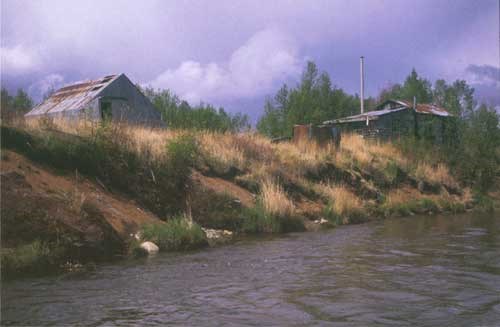
Photo courtesy of Janet Curran, USGS.
Alagnak Wild River is located within the traditional homelands of the Yup’ik, Unangax̂ and Athabascan people in Southwest Alaska. The Alagnak headwaters lie within the rugged Aleutian Range of neighboring Katmai National Park and Preserve. The river meanders west towards Bristol Bay and the Bering Sea. This resource-rich area has been home to humans for thousands of years (Alagnak Wild River: An Illustrated Guide to the Cultural History of the Alagnak Wild River) .
Camps and villages have been recorded all along the Alagnak River corridor that were used during the last cold period and through the time of contact with Russian traders and missionaries. This river drainage was a homeland to indigenous people until the late nineteenth century when they moved to new settlements for commercial opportunities.
From these ancient places all the way to modern day fish camps, the Alagnak corridor bears witness to the people who lived there. Today, Yupik, Sugpiaq Alutiiq, and Denaina people from Levelock, Iguigig, Naknek, and other villages make use of the Alagnak area for subsistence fishing, hunting, berry picking, and firewood gathering.
Listen to Yup’ik elder Mike Andrew, Sr. (Temquq) who was raised on the Alagank River (also known as Branch River) talk about his subsistence lifestyle in the Katmai National Park Project Jukebox. He was the youngest of fifteen children born to Anna and Alex Panelek in 1935 and was raised to survive by trapping beaver, otter, muskrat and fox, and by hunting moose and caribou.
Visit the Alagnak River website at: Alagnak Wild River (U.S. National Park Service) (nps.gov)
Last updated: October 30, 2024
